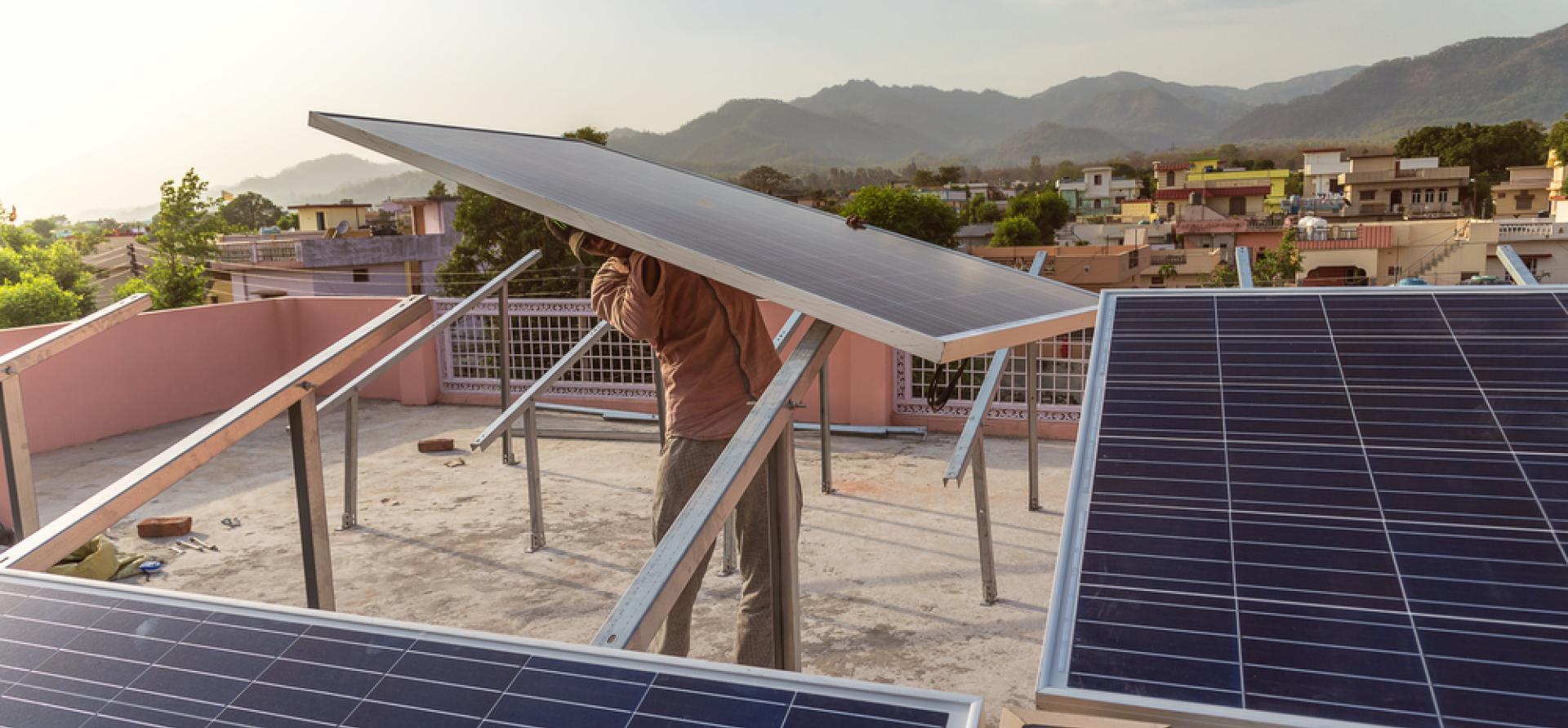
Key Findings
According to industry estimates, fiscal year (FY) 2024 will see the largest installations of rooftop solar to date of about 4 gigawatts (GW). Out of this, 2GW has already been installed between April and July 2023.
Micro, small and medium enterprises (MSME) remain largely untapped for their rooftop solar potential, currently pegged at around 15GW.
To spur activity in the rooftop market, regulators are actively exploring innovative business models, such as Virtual net metering and peer-to-peer trading.
According to JMK Research-IEEFA’s analysis, states like Gujarat, Andhra Pradesh and Telangana, and the union territory of Delhi, have the most favourable ecosystems for setting up rooftop solar projects. States like Tamil Nadu and Uttar Pradesh continue to discourage their high-paying C&I consumers from shifting to rooftop solar-based solutions.
Executive Summary
Rooftop solar is an important market segment of India’s solar sector. It comprises on-site solar installations connected in a behind-the-meter (BTM) configuration on the consumer’s premises. It provides buyers a viable option to green their electricity consumption by procuring on-site cheaper and cleaner renewable energy.
JMK Research and IEEFA’s previous work in this segment provides details about the evolution of this sector. This report attempts to capture recent market trends that have shaped this sector, especially in the last two years, new regulatory updates across central and state levels, new financing trends, and innovative business opportunities that can spur activity in the rooftop commercial and industrial (C&I) segment.
According to the Ministry of New and Renewable Energy (MNRE), as of July 2023, the cumulative installed capacity of rooftop solar in India was 10.9 gigawatts (GW). This represents a share of around 15% of the total solar installations in India. Until fiscal year (FY) 2019, rooftop solar installations in India were a meagre 1.8GW. Since then, the rooftop solar market has consistently grown by around 1.9-2.2GW annually. According to industry estimates, FY2024 will see the largest installations to date of about 4GW. Out of this, 2GW has already been installed between April and July 2023.
Conducive net metering policies, ease of regulatory approvals and potential monetary savings that a C&I consumer can realise by adopting rooftop solar influence a state's attractiveness.
As part of India’s overarching National Solar Mission, the government envisioned the installation of 100GW of solar capacity by 2022. Out of this, 40GW was assigned to rooftop solar. To achieve the 40GW target, the central government launched two phases (in 2015 and 2019) of the Grid-Connected Rooftop and Small Solar Power Plants Programme. The programme provided incentives through central financial assistance (CFA) to install rooftop solar plants.
Despite the government’s efforts, by the end of 2022, only 8.1GW had been installed, according to data from the MNRE. This massive shortfall (around 80%) in the target forced the MNRE to extend the timeline of Phase-ll of the programme by more than three years to March 2026.
There are several major roadblocks hindering the growth of the rooftop solar market in India. These include regulatory issues, such as inconsistent net metering policies across states. Net metering is a crucial parameter that influences the financial viability of a rooftop solar plant. Fearing loss of revenue from their high-paying C&I consumers, certain state electricity distribution companies (DISCOMs) sometimes delay the net metering approval or fail to provide approval altogether.
In some states, the implementation of Green Open Access Rules, 2022 shifted the market attention for solar development from rooftop solar to open access (OA), leading to state regulators prioritising OA approvals over rooftop solar.
In addition to regulatory concerns, financing continues to be a major challenge for the rooftop solar market. Compared to other solar segments (utility-scale and OA), leading financers generally perceive rooftop solar plants to be riskier investments. Loans for rooftop solar installations generally carry a higher interest rate and have longer approval times, ultimately defeating the purpose of installing rooftop solar, which has a better rate of return and low payback period.
To spur activity in the rooftop solar market, regulators are actively exploring new and innovative business models, such as virtual net metering and peer-to-peer (P2P) trading.
Through virtual net metering, consumers at different locations can aggregate and source rooftop solar power from a single, large solar plant. Virtual net metering can help bridge the gap between utility-scale and rooftop solar installations as it helps consumers set up large-sized installations by taking advantage of economies of scale.
In P2P trading, consumers in the same DISCOM jurisdiction can trade excess solar power. Providing an alternative to net metering, this model ultimately allows energy consumers to become energy prosumers.
The onus is now on policymakers and regulators to develop solutions to accelerate deployment in the rooftop solar segment in India.
Despite accounting for around half of the industrial electricity consumption in India, micro, small and medium enterprises (MSME) remain largely untapped for their rooftop solar potential, which is currently pegged at around 15GW. The lack of adequate financing avenues for MSMEs is the key reason for this situation. However, MSMEs have recently undergone an evident yet gradual behavioural shift towards green energy. To address this demand, several rooftop solar financers are formulating MSME-focused lending plans and allowing them collateral-free loans.
Of all the solar market segments in India, rooftop solar has historically remained a laggard. The onus is now on policymakers and regulators to develop solutions to accelerate deployment in the rooftop solar segment in India. Some of the solutions that they can consider are:
- Create separate renewable purchase obligations for decentralised renewable energy systems, which can include rooftop solar.
- Permit BTM systems across states irrespective of sizing constraints. Once recognised, this segment can help DISCOMs accurately forecast their load schedule and will be key to achieving the government’s 40GW rooftop solar target by 2026.
- Have uniform regulatory provisions across states. Blanket guidelines and rules for the rooftop solar market issued by a central authority, similar to the Green Open Access Rules, will be hugely beneficial.
- Strictly enforce solar procurement targets so that state and central regulators can facilitate the adoption of rooftop solutions by MSMEs.
With the right policies and support, it is possible to unlock the massive potential of rooftops across India.


















